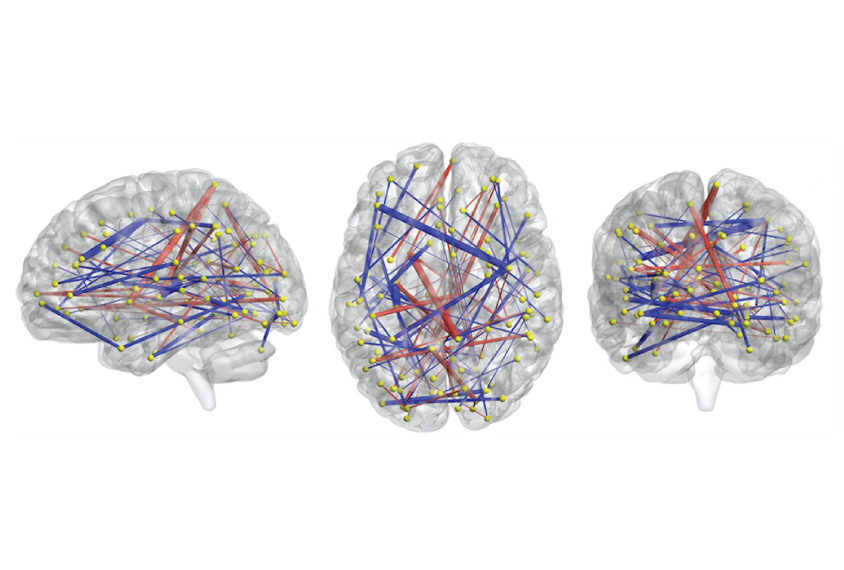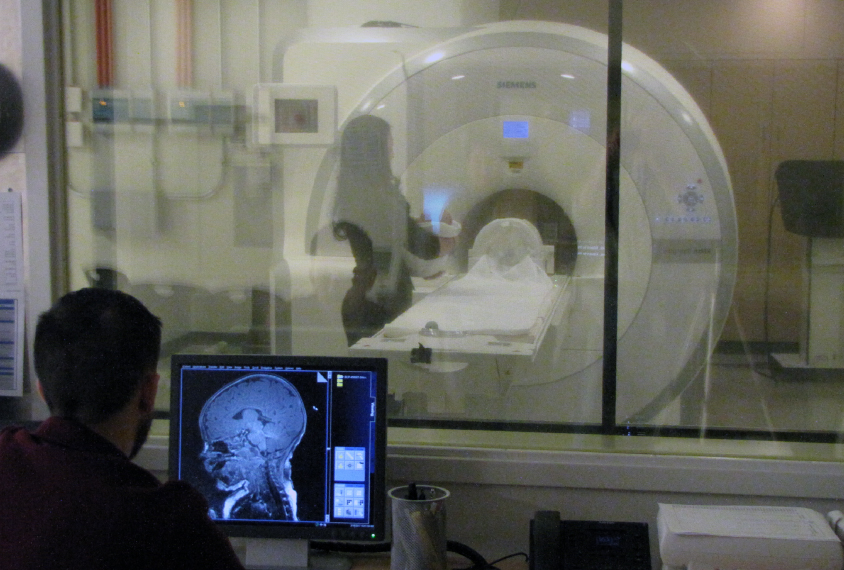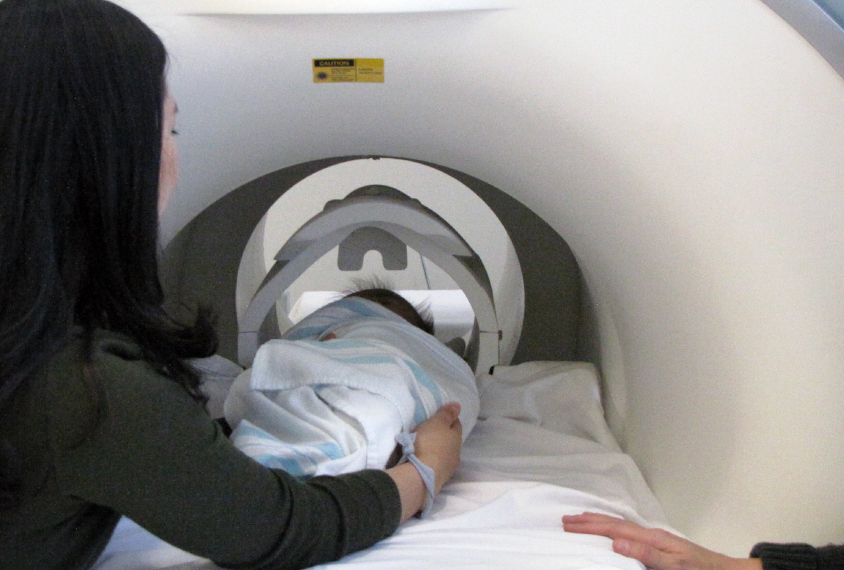
Brain scans may forecast autism in high-risk infants
Patterns of brain activity in 6-month-old babies accurately predict which children will be diagnosed with autism at age 2.
Patterns of brain activity in 6-month-old babies accurately predict which of them will be diagnosed with autism at age 2. The findings hint that brain scans may one day help doctors detect autism in infants1.
The study is small, and its findings need to be replicated before they can be used clinically. But researchers were nearly unanimous in their praise of the study’s promise for early diagnosis of autism.
“This is a game-changer for the field,” says Kevin Pelphrey, director of the Autism and Neurodevelopmental Disorders Institute at George Washington University in Washington, D.C., who was not involved in the work.
The study was published today in Science Translational Medicine.
Autism features such as social problems or repetitive behaviors typically emerge around age 2, and most children are diagnosed around age 4. Knowing which infants are most likely to have autism would allow clinicians to start them on behavioral therapy while their brains are most flexible.
“I think that most parents would find that really helpful and would want to know that,” says Joseph Piven, Thomas E. Castelloe Distinguished Professor of Psychiatry at the University of North Carolina at Chapel Hill and one of the lead investigators of the project.
The researchers looked at brain scans of ‘baby sibs’ — children who have an older sibling with autism. Baby sibs are known to have about a 20-fold increase in autism risk compared with the general population. The scans predict autism with 97 percent accuracy, the researchers found.
The type of brain scan the researchers used costs several thousand dollars, but more noninvasive and affordable methods, such as electroencephalography or near-infrared spectroscopy, might one day be used in clinics.
“This is a really, really important advance,” says Joy Hirsch, professor of psychiatry and neuroscience at Yale University, who was not involved in the study. “Even though [this method] might not be the particular version that becomes the clinical standard, it paves the way for earlier and objective diagnosis.”

Pattern recognition:
Piven and his collaborators used functional magnetic resonance imaging (fMRI) to look at brain activity in 59 baby sibs as they slept in the scanner. The children are part of the Infant Brain Imaging Study (IBIS), which tracks the development of more than 300 baby sibs.
“Autism is defined as a collection of behaviors, but infants don’t really have those behaviors,” says Robert Emerson, a postdoctoral fellow in Piven’s lab. “What we’ve gone to look for is the foundations in the brain that set those behaviors up in the future.”
Emerson and his colleagues measured the degree of synchronous activity between 26,335 pairs of brain regions. Regions that are active together are thought to be strongly connected. The scientists accounted for the babies’ head movements and other potential sources of error.
When the children were 2 years old, parents filled out questionnaires about their repetitive behaviors. The researchers assessed the children’s language abilities, motor skills, and social and communication behaviors. They diagnosed 11 of the 59 children with autism.
The team then entered the brain activity measures and behavioral test scores into a machine-learning algorithm. Using data from 58 of the 59 infants, the algorithm picked out the brain connections that differ between children with and without autism, and that track with scores on any of the behavioral tests.
The algorithm then used the brain activity data from the 59th infant to predict whether she would later be diagnosed with autism. The researchers repeated this process 58 more times to predict the diagnosis of each baby. The computer correctly flagged 9 of the 11 children with autism, and made no mistakes in identifying the children who don’t have the condition.
“The fact that their machine-learning approach has such high specificity and sensitivity and is useful at the level of an individual child is truly impressive,” says Charles Nelson, professor of pediatrics and neuroscience at Harvard University, who was not involved in the study.

Promising predictor:
The findings add to mounting evidence that brain alterations signal autism well before the condition’s characteristic features emerge. In February, Piven and his colleagues predicted the diagnoses of baby sibs using snapshots of brain structure collected at multiple time points during childhood.
The new method requires only a single scan from each child.
Data from brain scans may also prove useful for assessing a treatment’s effectiveness, says Pelphrey, who has worked with Piven’s team in the past.
The study does not reveal which brain regions or connections are altered in autism, or the underlying biology.
“The next step is to figure out if this is telling us something about what those [altered] connections mean in terms of early brain development,” says Emily Jones, lecturer in the Centre for Brain & Cognitive Development at Birkbeck, University of London, who was not involved in the study.
It is also important to see if brain scans can forecast difficulties with certain skills. “Predicting autism as a category isn’t necessarily that useful,” Jones says. “What you want to do is predict which children are going to have more difficulties, or the kinds of difficulties that they might need early intervention for.”
Emerson says he and his colleagues are adapting their algorithm to link brain activity patterns with particular abilities. They are also exploring how the patterns they’ve found relate to structural changes in the babies’ brains.
References:
- Emerson R.W. et al. Sci. Transl. Med. 9, eaag2882 (2017) Abstract
Syndication
This article was republished in Scientific American.
Recommended reading

Too much or too little brain synchrony may underlie autism subtypes

Developmental delay patterns differ with diagnosis; and more

Split gene therapy delivers promise in mice modeling Dravet syndrome
Explore more from The Transmitter

During decision-making, brain shows multiple distinct subtypes of activity

Basic pain research ‘is not working’: Q&A with Steven Prescott and Stéphanie Ratté
